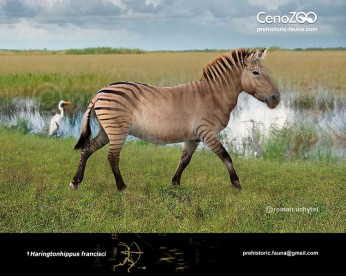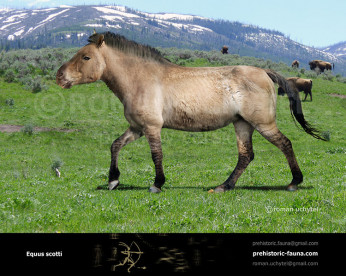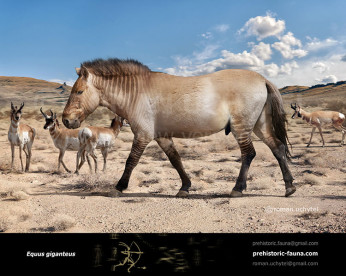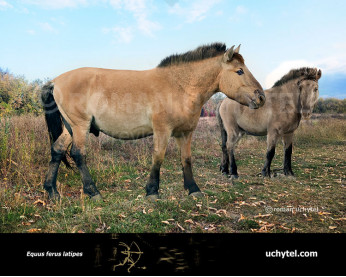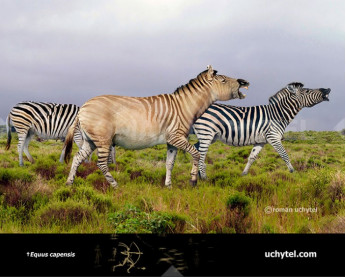Equus (Allohippus) stenonis
100100Equus (Allohippus) stenonis (Equus (Allohippus) stenonis Cocchi, 1867)
Order: Perissodactyla
Family: Equidae
Dimensions: 2,5 m in length, 150 cm in height, 450kg of weight
Expansion: Late Pliocene - Early Pleistocene (Eurasia, North Africa)
Equus (Allohippus) stenonis is an extinct genus of zebra-like horse that lived in the Late Pliocene-Early Pleistocene in Western Europe, South East Europe and in North Africa. Part of the Taman faunal assemblage and open spaces inhabited savanna type. It lived in a fairly arid climate. This horse was large about the height at the withers reaching 145-155 cm in the structure of the dentition, the skull and limb bones were observed archaic features. It was one of the first migrants to North America.
In Eurasia the horses entered in the land bridge between Siberia and Alaska 2.5-3.0 million years ago and quickly spread to the territory due to the extensive development of the steppe spaces. In Europe, tis horse appeared Stenona 2.0 million years ago too approximately 1.0 million years ago. Its range covers Western (France, Italy, etc.) and Eastern Europe (Moldova, southern Ukraine, Crimea), the North Caucasus and Transcaucasia (Georgia .) Similar to remains found and further east - in Kazakhstan, Tajikistan and Western Siberia. As a representative of primitive horses, it was replaced by the more progressive views.
Equus (Allohippus) stenonis (Equus (Allohippus) stenonis Cocchi, 1867)
Order: Perissodactyla
Family: Equidae
Dimensions: 2,5 m in length, 150 cm in height, 450kg of weight
Expansion: Late Pliocene - Early Pleistocene (Eurasia, North Africa)
Equus (Allohippus) stenonis is an extinct genus of zebra-like horse that lived in the Late Pliocene-Early Pleistocene in Western Europe, South East Europe and in North Africa. Part of the Taman faunal assemblage and open spaces inhabited savanna type. It lived in a fairly arid climate. This horse was large about the height at the withers reaching 145-155 cm in the structure of the dentition, the skull and limb bones were observed archaic features. It was one of the first migrants to North America.
In Eurasia the horses entered in the land bridge between Siberia and Alaska 2.5-3.0 million years ago and quickly spread to the territory due to the extensive development of the steppe spaces. In Europe, tis horse appeared Stenona 2.0 million years ago too approximately 1.0 million years ago. Its range covers Western (France, Italy, etc.) and Eastern Europe (Moldova, southern Ukraine, Crimea), the North Caucasus and Transcaucasia (Georgia .) Similar to remains found and further east - in Kazakhstan, Tajikistan and Western Siberia. As a representative of primitive horses, it was replaced by the more progressive views.

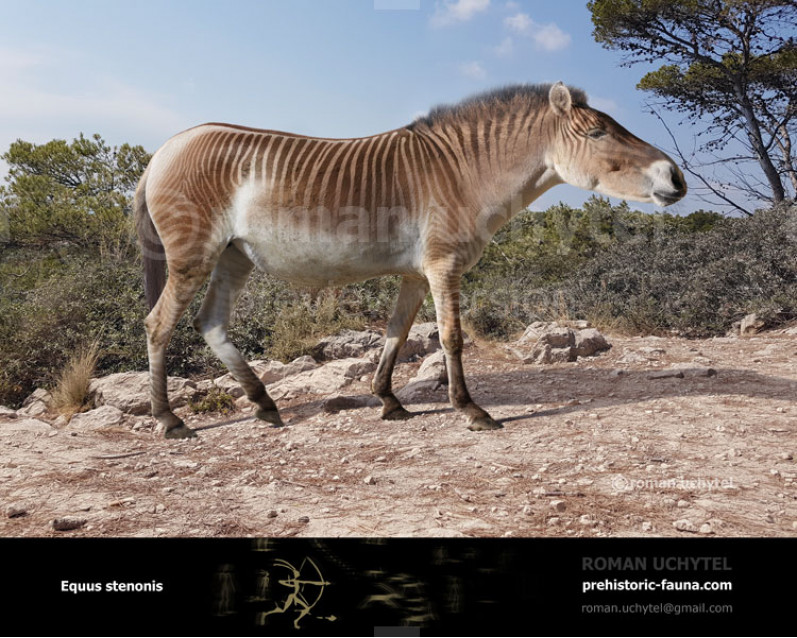
-797x638.jpg)
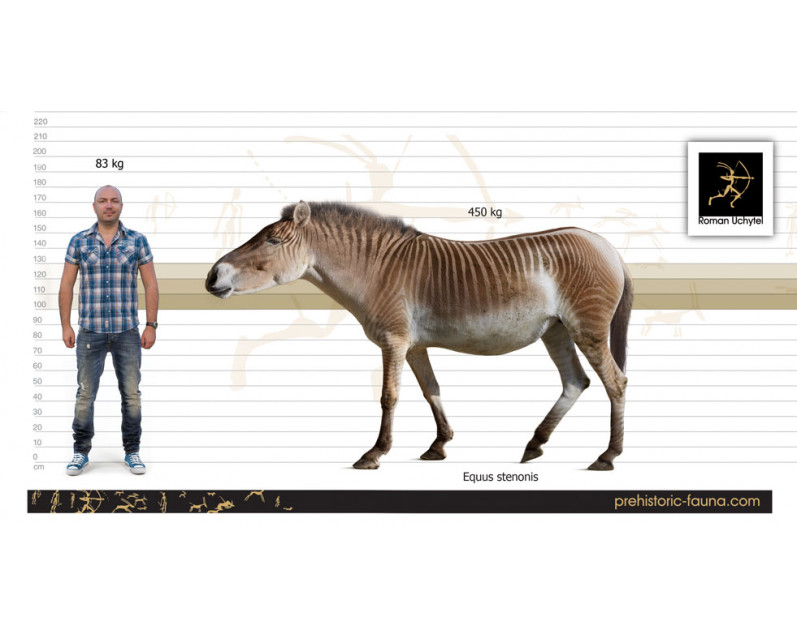

-70x56.jpg)

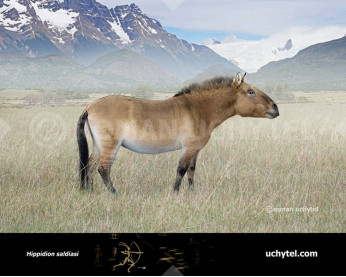
-346x277.jpg)
-346x277.jpg)

